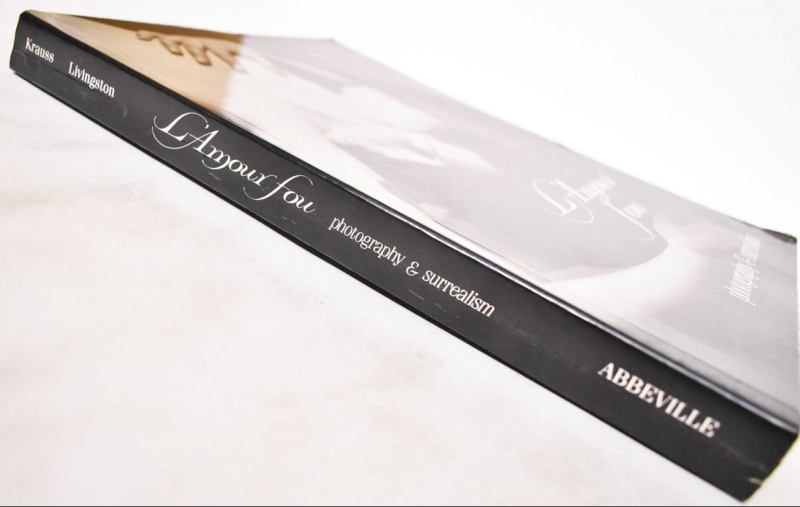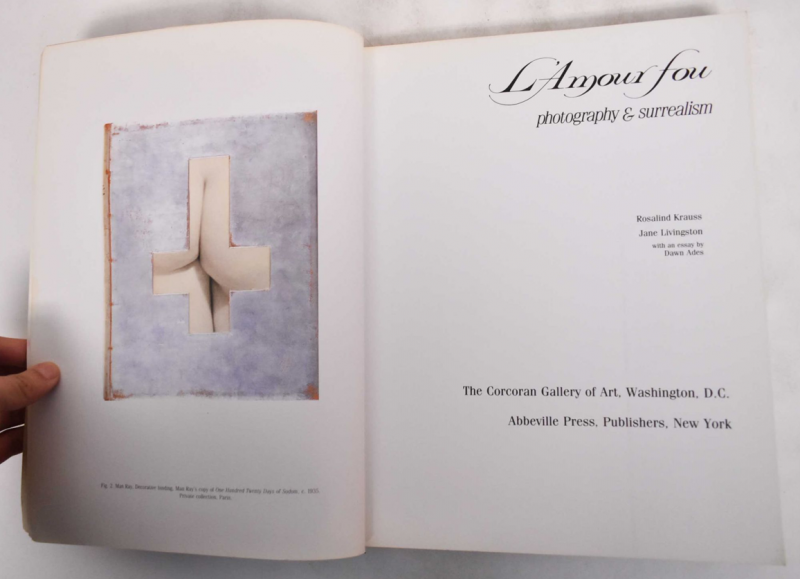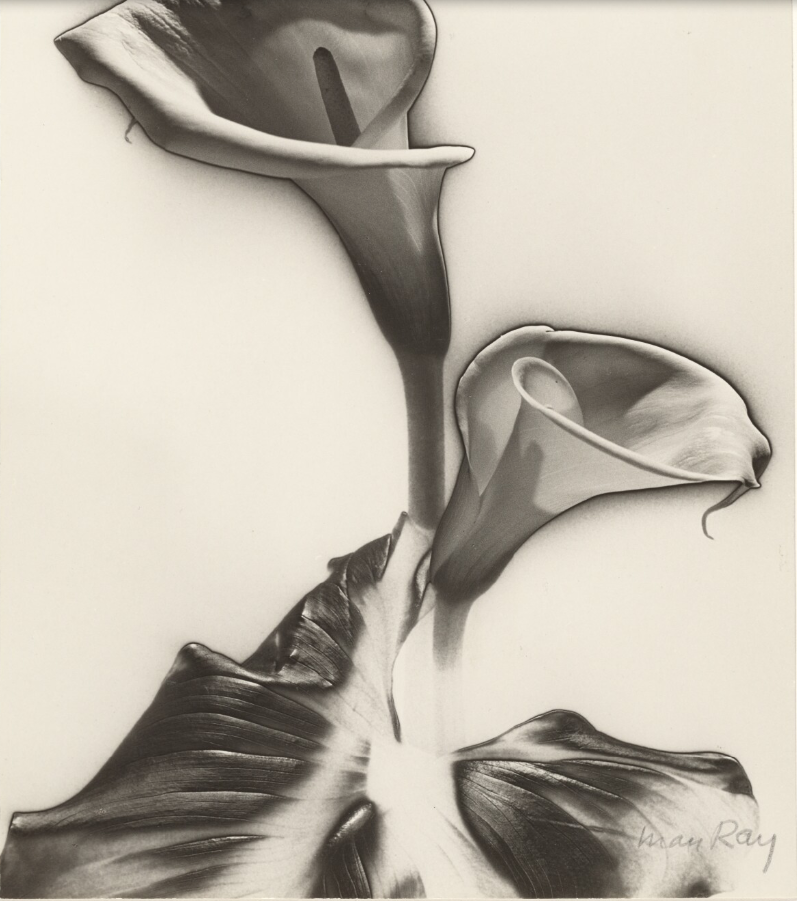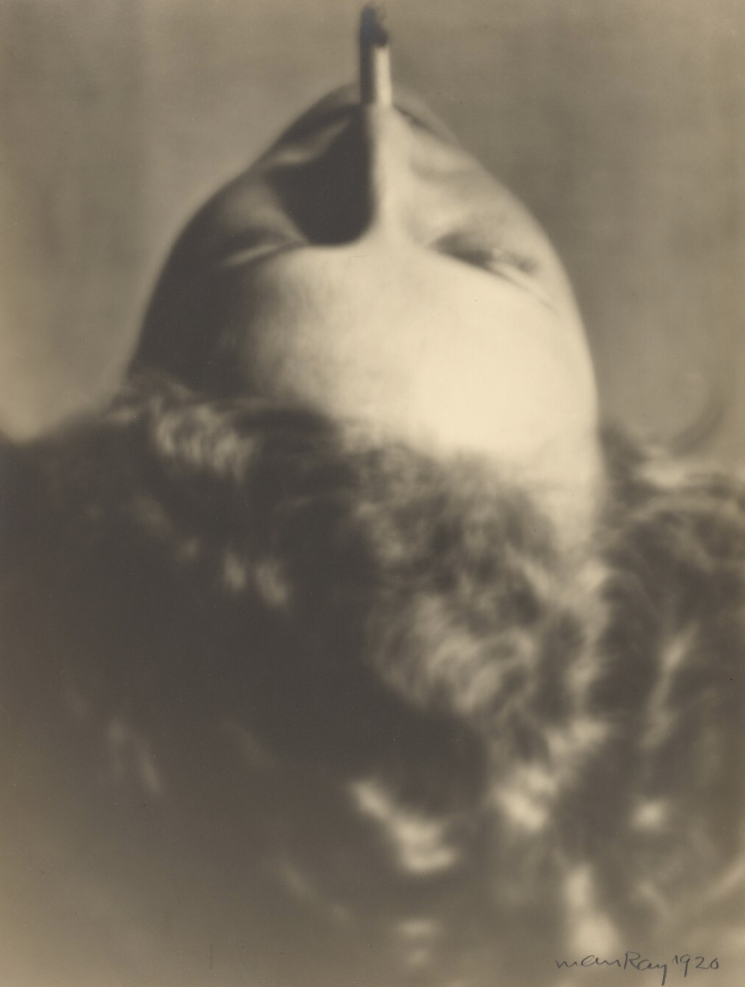SOLD. ‘L’Amour Fou: Photography & Surrealism’
L’Amour Fou: Photography and Surrealism
By Rosalind Krauss & Jane Livingston; with an essay by Dawn Ades
Corcoran Gallery of Art, Washington, D.C. / Abbeville Press, New York, 1985
English
Hardcover, 244pp, 200 duotones, & 24 full color illustrations.
- Publisher : Abbeville Press (Oct. 25 1985)
- Language : English
- Hardcover : 244 pages
- Item weight : 1.72 kg
- Dimensions : 23.5 x 3.18 x 30.48 cm
Asking USD$125.
L’Amour Fou: Photography & Surrealism is the first book ever to study the crucial role that photography did in fact play in the surrealist movement.
Andre Breton’s surrealist manifestos of the 1920s and ’30s, along with his novel concept of “”l’amour fou,” ascribed to his revolutionary Parisian art movement “the intensely illogical reality of a dream.” British and American art educators Krauss, Livingston and Ades in this rich picture book examine the very extensive role of photography (an unlikely medium on the face of it) in the surrealist movement. Shown here are photographs by Man Ray, Brassai, Tabard, Ubac, Boiffard and others whose choice of subject and/or photolab manipulations leave in no doubt their surrealist competence and intent. Illogical juxtapositions, twisted imagery (e.g., Hans Bellemer’s “Doll” sequence), light-and-shadow cutouts, and coldly unerotic dissections of the female form boldly assert surrealism’s quest for an ultimate truthits own “psycho-atmospheric-anamorphic” knowledge. A scholarly tour de force, this is the catalogue of a traveling exhibition.
Full Book featured Here:
https://archive.org/details/lamourfouphotogr0000krau/page/n253/mode/2up
REVIEW:
“L’Amour Fou”
CORCORAN GALLERY OF ART
Why did photography play such an important role in Surrealist art? It was this question that provided the impetus for “L’Amour Fou,” a major survey of Surrealist photography cocurated by Rosalind Krauss and Jane Livingston. (The exhibition is now being mounted in San Francisco, and it will then travel to Paris and London.) The fundamental achievement of this fascinating show is that it reminds us that photography did indeed play such a role in the advancement of Surrealism. It demonstrates just how central that role was by assembling an astonishing number of vintage photographs, contemporary reprints, and reproductions from the books and journals that were equally important to the movement.
Thus “LAmour Fou” offers broad selections of work by photographers well-known for their association with Surrealism—Brassaï, André Kertész, and Man Ray, for example—as well as by Surrealist artists who worked in the medium only occasionally including Salvador Dali, René Magritte, and Max Ernst. At the same time, it brings to our attention the efforts of less renowned artists such as Claude Cahun, Paul Nougé, and Marcel Mariën. In their selection of work and in their essays for the excellent catalogue that accompanies the exhibition, Krauss and Livingston (along with Dawn Ades, who also contributed a catalogue essay) demonstrate the recurrent themes that run through this work, and through Surrealist art in general, among them fetishism, ecstasy (both sexual and religious), and physical decay and death. In a particularly far-reaching essay, Krauss links André Breton’s idea of “convulsive beauty” with Sigmund Freud’s notion of the “uncanny,” ”the collapse of the distinction between imagination and reality“ (Krauss), and further, with Roland Barthes’ punctum, the intensely subjective belief that (as Krauss says) ”the photograph exists as a construct—fabricated ’for me.’ “
The careful scholarly framing helps make this an exceptionally valuable exhibition in both art-historical and critical terms, but the subjective impact of the pictures themselves lies beyond this frame. Many are intensely sexual—Man Ray’s solarized heads and nudes, especially the delirious Primat de la matière sur la pensée (Primacy of matter over thought, 1929); Georges Hugnet’s exuberant teen-boy sex-joke photomontages (in one untitled montage from 1934 the Eiffel Tower sprouts between the splayed legs of a cheery young woman); and Hans Bellmer’s famous “La Poupée” (Doll) series of the ’30s and ’40s. Of particular interest among the lesser-known artists in the exhibition is Jacques-André Boiffard, who was commissioned by Breton to take photographs to illustrate his novel Nadja (1928). (He later split with Breton and collaborated with Georges Bataille on various projects.) Boiffard’s work ranges from conventional, if well-lit, bondage photographs (women in chains and black-leather head masks) to depictions of more subtle forms of fetishism, including a series of close-ups of big toes.
The Surrealists’ use of various forms of chemical and optical manipulation is exemplified by Raoul Ubac’s series “Le Combat des Penthésilées” (Battle of the Amazons, 1939). Ubac repeatedly solarized, montaged, and rephotographed images of the same nude, creating dense tapestries of half-recognizable figures in the shallow reversed space that is characteristic of solarization.
It was this ability to combine the fantastic with the intense believability of photography that appealed so strongly to the Surrealists. Now though, many of these pictures seem dated, even funny; we have become too jaded not to be aware of the fact that all photographs are more or less deliberately constructed. But in the best of this work, the intensity of the artists’ visions combines with the inherently paradoxical nature of the medium to produce works that almost persuade us to forget what we unfortunately know, to be swept away by their dark passions.










































